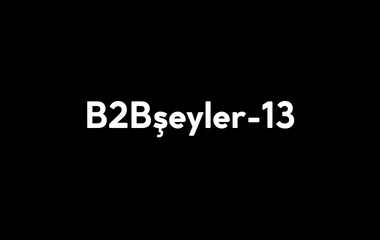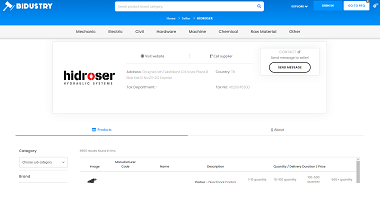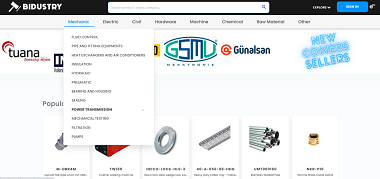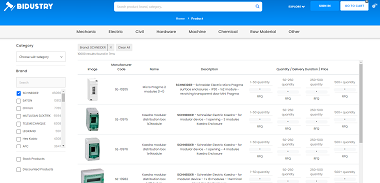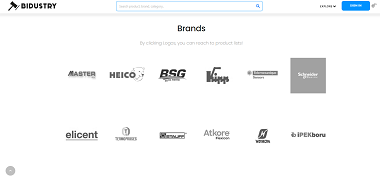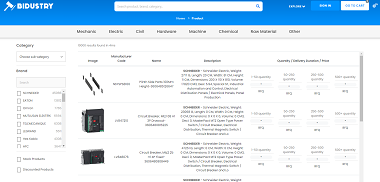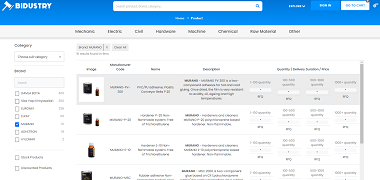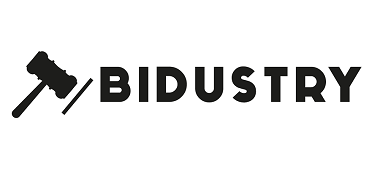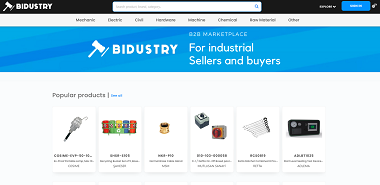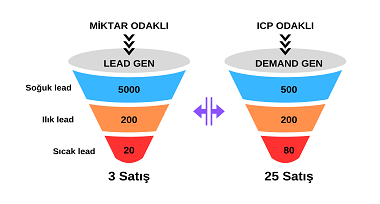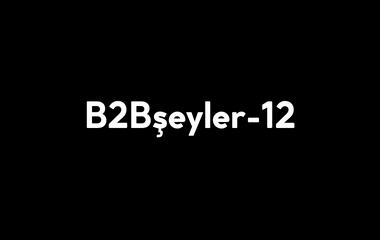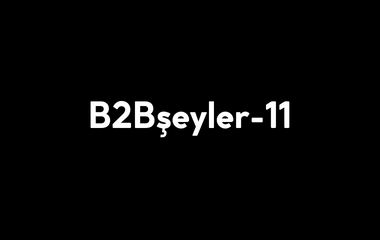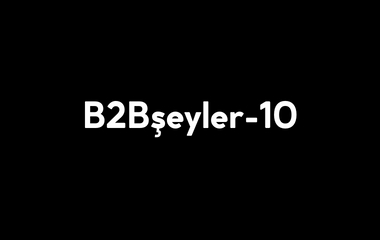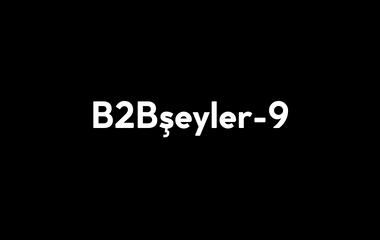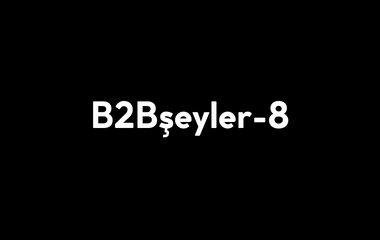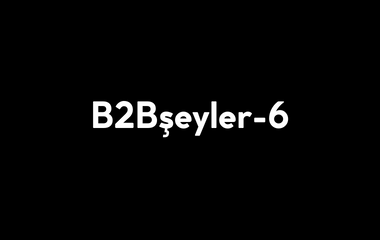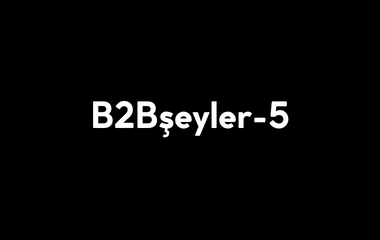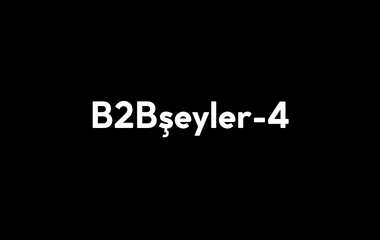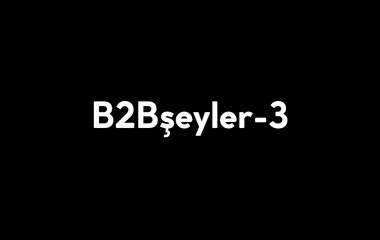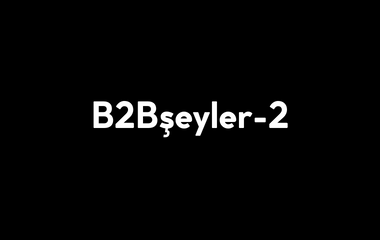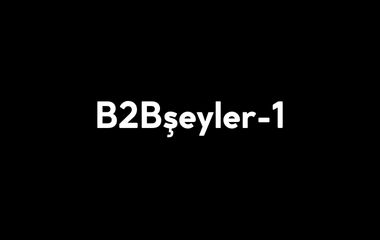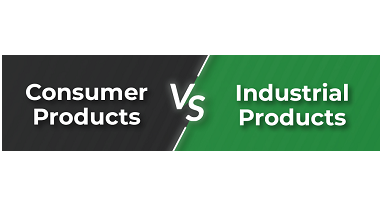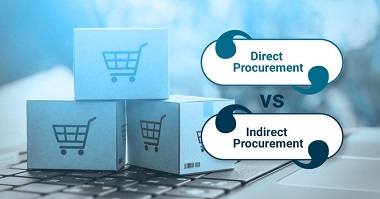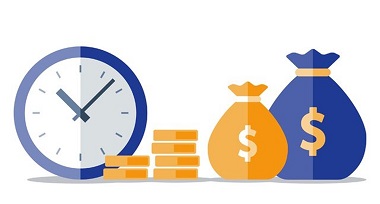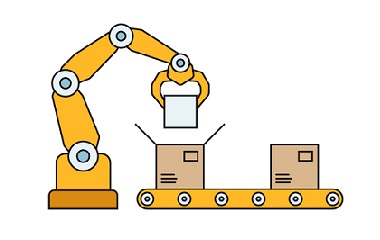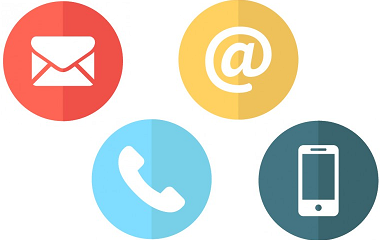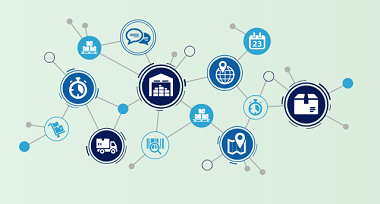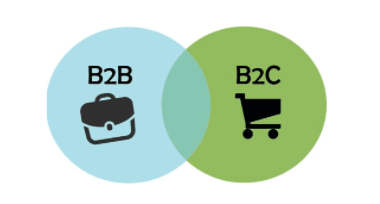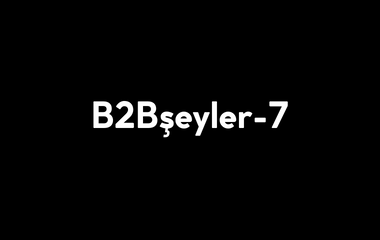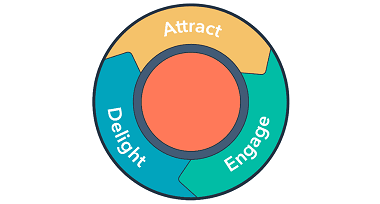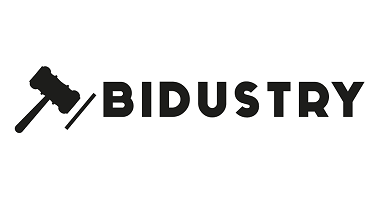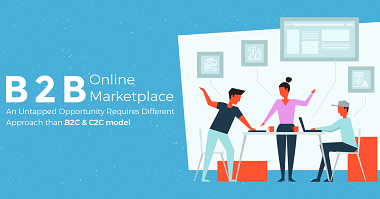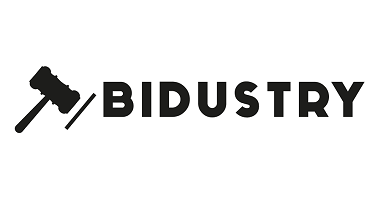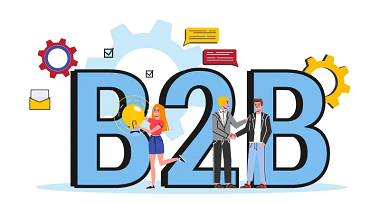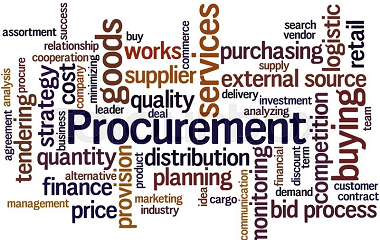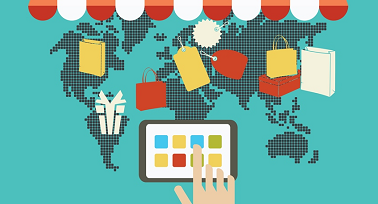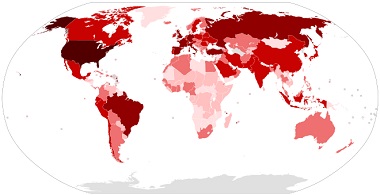A
ACCOUNT: Customer account as an individual or firm. The account includes customer information, payments received, products and services offered, etc. Contains basic or pro tracking information.
ACCOUNT-BASED MARKETING (ABM): Long sales cycle +6 months, purchasing team of 3-5 people, average sales +30,000 USD, the total number of customers in a market +1000, hybrid sales (product+consulting+training ), etc.
ACCOUNT-BASED EVERYTHING/REVENUE (ABE/ABR): Process management examining the revenue generation process with the coordination of account-specific marketing, sales development, sales, finance, and after-sales services.
ACCOUNT EXECUTIVE (AE): Person who manages the marketing and sales activities between the company and the customer.
ACCOUNT DEVELOPMENT REPRESENTATIVE (ADR): Person who works in processes related to account manager.
ACCOUNTS PAYABLE: The money a business owes after purchasing a product or service.
ACCOUNTS RECEIVABLE: Customers who are expected to be paid for purchasing products or services from a business.
ANNUAL RECURRING REVENUE (ARR): It is the annual recurring turnover of a business. (See also MRR)
AVERAGE CONTRACT VALUE: AVERAGE SALES AMOUNT / Average revenue from a single customer in a given period.
ANNUAL CONTRACT VALUE (ACV ): ANNUAL AVERAGE CONTRACT AMOUNT / Average turnover earned from an account within a year. For example, a 5-year, 50K USD agreement was reached with an account. Annual ACV is $50K/5 years = $10K. (More in tech startups.)
ACCOUNT SEGMENTATION: It is the ability of companies to market a product or service to each potential customer group effectively and appropriately, by dividing existing customers into groups based on common characteristics. Industries, number of employees, average sales amount, annual recurring income, countries, purchasing who the committee is composed of, etc. factors can aid partitioning. (See also CUSTOMER SEGMENTATION)
ALLBOUND: General name of inbound and outbound marketing and sales processes used by a company in all processes including marketing, sales generation, sales and after sales. Allbound=Inbound+Outbound (See also INBOUND MARKETING, OUTBOUND MARKETING)
AB TESTING: Separation Test. A type of marketing experiment in which two different versions of something are tested. This could be a cold email. The results are compared in terms of conversion by showing them to different test groups at the same time.
Application Programming Interface (API): APIs are a set of defined rules that facilitate communication between different applications. It acts as an intermediary layer that facilitates data transfer between software.
B
B2B: Abbreviation for "business to business". Marketing, sales, business development, interaction, etc. identify the parties in the activities.
BUYER: Potential customer. (See also CLIENT, CUSTOMER, LEAD, PROSPECT)
BOFU (BOTTOM OF THE FUNNEL): This definition refers to the stage of potential customers in the sales funnel before they turn into paying customers. (See also TOFU, MOFU)
BUSINESS INTELLIGENCE (BI): It refers to the process of collecting and interpreting relevant data to make some product or market-related decisions within a company. Various technology tools can be used for data collection and processing.
BUSINESS DEVELOPMENT REPRESENTATIVE (BDR): Someone who focuses on finding new customers, building relationships at the core level, and new customers in the pipeline for customer managers. (See also SDR, ADR)
BUYER PERSONA: It is the detailed version of the ideal customer profile. For example, let's assume that the ideal customer profile for a Realtor is families with children. The buyer persona can be those with children over 10 years old, etc. (See also ICP)
BUYER ENABLEMENT: Buyer enablement is more about helping potential customers buy than helping marketing and sales teams sell. Sales teams take on the role of educating customers more. On the other hand, potential customers are in demand. The journey of self-learning and purchasing is developing one step further into life every day. Buyer activation has become more popular, especially after inbound marketing (See also INBOUND MARKETING, SALES ENABLEMENT)
BANT (BUDGET, AUTHORITY, NEED, TIMELINE): Used by sales professionals to describe a customer's qualifications. Right customer, right product, right timing.
BREAK-UP E-MAIL: A break-up email is the last email sent to a cold prospect. The customer may be cold or be ghosting. Communication may have been completely lost. A final email is sent to close the case. (See also FOLLOW UP EMAIL)
BUYER GHOSTING: Sales representatives can generate potential customers in the funnel into qualified leads. In other words, warm or warm leads or a qualified potential customer may want to reach direct sales. The potential customer who cuts off becomes unreachable when everything is going great. Does not respond to emails and calls. In one study, 26% of sales representatives rated buyer disconnection, or ghost treatment of buyers, as the third factor that negatively affects their mental health.
B2B LEAD DATABASE TOOL: Now we have a life on the Internet too. Potential customers can use various social media etc. active on platforms. These types of tools allow you to segment potential customers by scanning the internet. For example linkedin sales navigator, apollo.io etc.
BOGO - BUY ONE GET ONE: BOGO to offer a potential customer another product for free or at a discounted price in exchange for purchasing one product at a specified price.
C
CALL FOR PROPOSAL (CFP): The process of collecting products, information, and offers from suppliers for a service requested by a business in the procurement process. The customer doesn't just want the price. They want detailed information about the product and service. See also RFP.
CHANNEL PARTNER: Collaboration with a brand of companies that have other products and services, mostly through a joint branding agreement. Regional offices, distributors, dealers, sub-dealers, and re-sellers. (See also CHANNEL SALES)
CHURN RATE: It refers to the rate of customers who stop using or cancel the product or service of a business in a certain time period.
CLICK THROUGH RATE (CTR): It is the ratio of the number of clicks on a link, that is, the page, to the number of impressions. An ad was clicked 1000 times and shown 10,000 times. The click-through rate is 10%
CLIENT-CUSTOMER: A person who buys a product or service. (See also Buyer )
CLOSED OPPORTUNITIES: Refers to accounts that have resulted in sales in the pipeline. See also CLOSED WON- CLOSED LOST - Sold accounts and not sold accounts.
COLD CALL: Calls made to a prospect mostly to set up a meeting. Prospects often receive these types of calls when they have no interest in a product or service or have no research of some kind.
COLD E-MAIL: E-mails sent to a prospect, mostly to start a conversation about a problem or solution. The leads that receive these types of emails are usually those who have no interest or research into a product or service.
COLD LEAD: Potential customers who have no interest in your product or service, or who do not know, but may be interested and suitable for your ideal customer profile. They are at the top of the sales funnel. (See also WARM LEAD, HOT LEAD)
CONVERSION RATE: The rate at which target customers become paying customers.
COST PER CLICK (CPC ): It is the bid fee metric that internet advertisers pay in ads based on the number of people who click on the ad. Google Ads, Facebook ads, etc.
CROSS-SELL: Offering a discounted or free second product to a customer who purchases a product or service, or purchasing a second product or service that may be related to the product purchased by the customer. ( See also UPSELL)
CUSTOMER ACQUISITION COST (CAC): The cost of acquiring a new customer to pay for a product or service. (Sales and marketing cost / total customer acquired)
CUSTOMER RELATIONSHIP MANAGEMENT (CRM): Recording, tracking, analyzing, etc. customer data to improve customer relations and increase efficiency in the sales process. It is a technology tool that provides opportunities and enables to set up of a series of systems, and applications related to them. It allows creating of company memory.
CUSTOMER SUCCESS: It is the set of functions, strategies, or departments that are determined or established to optimize the relationships established by the enterprises with the customers, reduce the loss rate, increase profitability, and increase the predictability of recurring income. It handles the entire journey of the customer. Marketing, sales development, sales, finance, and after-sales. The strategy now turns from support to succeed.
CUSTOMER SUPPORT: services they purchase correctly. Product installation, training, troubleshooting, maintenance, upgrade, etc. covers topics.
CUSTOMER AWARENESS LEVELS: According to Eugene Schwartz, there are 5 types of customers: those who are unaware of their problem, those who are aware of their problem but do not know the solutions, those who know the solutions but do not know about you, those who know about you but have not bought from you yet, those who are about to buy from you, or those who bought from you.(See also UNAWARE, PROBLEM AWARE, SOLUTION AWARE, PRODUCT AWARE, MOST AWARE)
COLD OUTREACH: All methods used to market a product or service, it is possible to communicate with potential customers by e-mail, message, telephone, etc., with whom no previous relationship has been established. (See also COLD CALL, COLD E-MAIL)
CALL TO ACTION: A type of content intended to encourage a user to take action. Video, blog, product page, etc. may contain content. (Buy now, click here, learn more, etc.)
D
DEAL CLOSING: A completed sales transaction where the potential customer agrees to purchase a product or service
DEAL: Opportunities that may arise with potential customers (LEAD) ideally open in CRM. More than one company can be opened. In the pipeline (PIPELINE), each deal has a sales value, which tells us how many consistent business opportunities we have in total.
DECISION-MAKER: A person or persons who have sufficient equipment and authority to decide a decision-making sales process.
DEMAND GENERATION: Contents and resources on a business that uses to raise awareness of potential customers on a self-learning journey. Podcasts, youtube videos, blogs, etc. can be considered from these sources. On the contrary of demand generation, lead generation is focused on lead quantity. Lead generation is about marketing's relationship with sales, Demand generation is more concerned with the brand awareness side of marketing. (see also lead generation.)
DIRECT SALES: In a dealer store, office, etc. It is the type of sales made by direct contact with the potential customer in the field.
DRIP CAMPAIGN: A group of emails that are automatically sent to a specific group of potential customers at a specified time interval.
DEFERRED REVENUE: It is money received in advance for products and services that have not yet been offered.
DAU/WAU/MAU: Number of daily, weekly, and monthly active users.
DISCOVERY CALL: It is a call to understand that the potential customer fits well with the ideal customer profile.
E
EBITDA ( Earning before Interest Taxes, Depreciation, and amortization ): A company's earnings before interest, depreciation, and tax.
EMPLOYEE ENGAGEMENT: How much and how much effort the employees make to increase the image, reputation, and profitability of a company, and their level of commitment to the organization.
ENTERPRISE RESOURCE PLANNING (ERP): Particularly medium and large scale enterprises' purchasing, inventory, transportation, product planning, human resources, etc. It is software that aims to monitor and improve processes together.
EOM-EOQ-EOY ( End of Month-Quarter-Year ): It is the process of monitoring the efficiency of sales processes.
EXPANSION MRR: Indicates the situation of new revenue from customers with previous monthly recurring revenue. For example, upgrading. See also UPSELL (More in technology initiatives.)
E-MAIL MARKETING: Delivering products and services to potential customers or existing customers via e-mail. See also cold emailing and lead nurturing _
E-MAIL MARKETING ROI: The ratio of the marketing campaign's revenue to investment cost.
E-MAIL OPEN RATE: The total number of leads sent and the rate that opened the e-mail.
ENABLEMENT: Enablement can be a mindset, mindset, set of rules, or methodology for engaging inactive sales teams or buyers. (See also SALES ENABLEMENT, BUYER ENABLEMENT)
EARLY ADAPTORS: The second group of 13.5% on the technology diffusion curve. While they are trendsetters and are comfortable taking risks, they won't spread it without a solid understanding of the technology. It is the group that matters whether they initiate word of mouth marketing or not. They come after innovators. (See also INNOVATORS, EARLY MAJORITY, LATE MAJORITY, LAGARDS)
EARLY MAJORITY: Third group of 34% on the technology diffusion curve. The early majority are interested in technology but want a market proof. Case studies and real-life user stories are important to this group. Therefore, there is a gap between the early adopters and the early majority. Most tech startups can't bypass that gap in their journey to scale. (See also INNOVATORS, EARLY ADAPTORS, LATE MAJORITY, LAGGARDS)
F
FIRMOGRAPHIC: Used to categorize organizations. For example, firmographic can be useful when determining the ideal customer profile. Who are the top 10 customer accounts sold? What is the turnover? How many teams does it consist of or does the organization consist of? What is the geographic location of the company? In which country or region?
FLYWHEEL: The sales flywheel is the new step in the sales funnel. It is aimed that the customers leaving the funnel will continue to buy and bring in new customers. All stages are followed to create a network effect. It deals with marketing, sales development, sales, finance, and after-sales processes together. (See also CUSTOMER SUCCESS)
FORECASTING: Predict possible future trends or outcomes based on available qualitative or quantitative data.
FOLLOW-UP E-MAIL: It is an e-mail or a series of e-mails sent according to the customer's user experience. It can also be sent to potential customers who have not been in contact for a long time. If shipping to existing customers, encourage them to choose a paid plan instead of a free trial, set up a meeting for B2B, leave feedback, buy another product on an e-commerce site, etc. encourages.
FOMO - FEAR OF MISSING OUT: In marketing, triggering FOMO is used to disrupt the inaction of users or potential customers. For example, 30% discount for 2 weeks. Or the last 4 products.
G
GATEKEEPER: An administrative assistant who provides access to decision-makers or authorized persons in a company.
GO-TO-MARKET STRATEGY (GTM): MARKET ENTRY STRATEGY / Production, advertising, distribution, pricing, direct sales, discounts, social media, etc., in a brand, product, or service that can be considered new to consumers. It is to gain a competitive advantage by developing strategies on issues.
GROSS MARGIN: / Total sales - the cost of goods sold. Not all costs. It can also be calculated proportionally. 70% can be expected in technology startups. (See also GROSS PROFIT, NET PROFIT)
GATED CONTENT: Online materials such as white papers, articles, and videos that require users to fill out a form before accessing them. It is more of a method that marketing uses for Lead Generation. On the Demand Generation side, there is ungated content (see also UNGATED CONTENT).
GOOGLE ANALYTICS: A free tool from Google that provides business insights from your websites and apps and collects data to generate reports.
GOOGLE SEARCH CONSOLE: A free tool offered by Google that allows users to index, check and optimize their pages on their websites.
GOOGLE TAG MANAGER: A free tool provided by Google for you to monitor your website or application in more detail. For example button clicks, shifts, pauses, etc.
H
HOT LEAD: potential customers are also qualified potential customers and sales qualified leads. These types of customers need your product or service and are in contact with the sales. They can also recommend it to others. They are at the bottom of the sales funnel. (See also COLD LEAD, WARM LEAD)
HERO STATEMENT: It is a few-sentence message usually found on a company's web address. A company cannot be everything to everyone. The hero message often focuses on the buyer persona and how that persona solves their problem in more detail than the ideal customer profile.
HAND-RAISER: This type of potential customer reaches the sales team to purchase after they have done all their research. A direct hot lead or a ready-to-sell lead. (See also HOT LEAD, SALES QUALIFIED LEAD)
HIGH-TOUCH SALES: It is a sales method in which sales professionals manage the entire sales process by communicating with their potential customers one-on-one. It is a process that often includes personalized touchpoints, product demos, and custom referrals. (See also LOW/NO TOUCH SALES)
I
IDEAL CUSTOMER PROFILE (ICP): Ideal customer profile is the basic characteristic of customers with high purchasing ability or the most important cornerstone of a company. Companies that cannot define the ideal customer profile can not plan for the future. What is firmographics? Who is the purchasing committee? What are the characteristics of the most suitable qualified leads? What are the channels to reach these customers? Which companies do 20% of our turnover come from? …(See also BUYER PERSONA)
INBOUND MARKETING: Marketing and sales teams produce content for their buyers searching the internet by responding to definitions such as ideal customer profile. In inbound marketing, prospective customers reach content that can be a solution to the problem while they are researching their problems. The content produced by the marketing and sales teams can be thought of as a magnet. Outbound Marketing is likened to a megaphone while Inbound marketing is likened to the magnet. (See also OUTBOUND MARKETING)
INFORMATION QUALIFIED LEAD (IQL): Irrelevant qualified leads, cold leads. (See also COLD LEAD) unrelated qualified leads may fit the ideal customer profile, but they are not related to your product or service. They may never have heard of it. They may need it, but they may not be aware of it. The right product, the right prospect, maybe the wrong time. (See also MARKETING QUALIFIED LEAD, SALES QUALIFIED LEAD, COLD-WARM-HOT LEAD)
INNOVATORS: The first group of 2.5% on the technology adoption curve. Innovators are those who are willing to take risks. Innovators are people who like to try new things and may even encourage others to try a new app or tool. (See also EARLY ADOPTERS, EARLY MAJORITY, LATE MAJORITY, LAGARDS)
J
JOBS TO BE DONE: A way to drill down into why potential customers are purchasing products. Consider, for example, a drill salesman. The drill vendor may appear to be selling drills. What is the job of the drill? Drill holes. Then that also means customers buy holes. The work method to be done can provide product pivots or pinpoint determinations in research and development processes.
K
KEY ACCOUNT: Key customers are customers who affect a company's turnover. If they are lost, they can be a problem in terms of income. They are VIP customers.
KEY ACCOUNT MANAGER: The key account manager manages the negotiations between the relevant company and the key customer, increasing the company's turnover by ensuring that key customers are satisfied with the products and services offered, and identifying new business opportunities for key customers.
KEY PERFORMANCE INDICATORS (KPI): Indicates whether an institution or individual has reached the targets within the specified time. It provides data-based tracking of growth, especially in businesses, with the logic that you cannot manage what you cannot measure. KPIs are steps to reach your OKRs. (See also OKR)
L
LEAD: Refers to potential customers who may be interested or interested in a product or service. Leads are the focus of attention of more marketing teams as leads. They can be divided into cold, warm, and hot categories. For example, a Hot Lead for marketing - A hot lead might be a PROSPECT lead for a sales team. (See also PROSPECT, POTENTIAL CUSTOMER)
LEAD GENERATION: Finding potential customers who may be interested or interested in a product or service into the sales funnel with various inbound and outbound marketing methods. Demand generation ( Demand Generation) creates the brand awareness and awareness-raising side of the marketing team while generating potential customers ( lead) generation ) and generates the number of qualified potential customers that the marketing team delegates to the sales team. (See also DEMAND GENERATION)
LEAD NURTURING: It is the process of establishing long-term relationships with customers who are close to purchasing but have not yet received them and updating them on developments. It is the process that is planned to be in front of potential customers when they need them, often classified as the right customer, the right product, but at the wrong time.
LEAD QUALIFICATION: / It is the process of determining whether a potential customer is suitable for your ideal customer profile. Potential clients can be either a good fit or a bad fit. If poorly fit leads are in the majority on the lead qualification table, the company may need to go back to the beginning and review the lead acquisition process. (See also LEAD QUALIFICATION MATRIX)
LEAD SCORING: It can be expressed as the value of potential customers according to the expectations of the company. Potential customer scoring is made according to the firmographic, purchasing committee, the nature of the account, the place of similar accounts in the turnover, and the decision-making processes related to the account, namely the IDEAL CUSTOMER PROFILE. It is the score given to the accounts that the sales team applies and allocates time to during the PROSPECTING process.
LIFETIME VALUE (LTV): The profit margin a company expects to earn from its business relationship (from.-to) with an average customer. For example, if the profit from the average product in the B brand is 100 USD, the customers will receive an average of 5 times a year in a 2-year cycle. Customer value (Customer value ) $100 x 5 = $500 Customer lifetime value (LTV)= $500 X 2 = $1000. For a SaaS product, the average profit from the subscription fee in one year is 5 USD / month. LTV is $5 x 12 = $60. In SaaS, CAC is another important metric. Let's say we had a marketing and selling cost of $3000 for 12 months. We have gained 200 customers. The cost of acquiring 1 customer is $3000 / 200 = $15. 60 USD LTV = 4 x 15 USD CAC. For SaaS, LTV > 3 x CAC is the appropriate rate. That's why tech startups try not to increase LTV but lower CAC. (See also CUSTOMER ACQUISITION COST)
LATE MAJORITY: The fourth group of 34% on the technology adoption curve. Like the early majority, the late majority want a data-driven reason to adopt technology. For this group, factors such as the timing of technology and age group are also important. (See also INNOVATORS, EARLY ADOPTERS, EARLY MAJORITY, LAGARDS)
LAGGARDS: Fifth group of 16% on the technology adoption curve. Laggards are wary of new technology. G They can easily become frustrated with new technology and give up. External factors that affect them are also important. For example, people over the age of 55 experience e-commerce during the pandemic period.
LANDING PAGE: A web page with a form for potential customers, customers, users, or visitors to register. Apart from the registration form, it may contain certain titles and sub-titles related to a product or service, or information subject of a company or individual. Often companies greet their potential customers on the landing page of their campaigns. (See also GATED CONTENT, LEAD GENERATION)
LOW-NO TOUCH SALES: It is a sales method in which has minimum or zero contact with the potential customer from the moment of first contact to the moment of sale. Although it is mostly seen in software products, it can rarely appear in our daily lives. For example, some chain markets. (See also HIGH TOUCH SALES)
M
MARKETING: Marketing is the most important issue for a company. All businesses are built on 5 value propositions. Creating value, marketing, selling, providing value, and finance. Marketing has three main tasks. Bringing new potential customers to the sales line, creating brand awareness and increasing awareness, contributing to the company culture.
MARKETING QUALIFIED LEAD: Related qualified leads are also warm leads. The concepts of cold, warm, and hot are preferred in potential customer scoring. Marketing qualified's are interested in more than one marketing content of a company. The concepts of cold, warm, and hot are mostly used by sales teams. Marketing teams may prefer IQL, MQL, or SQL. Marketing Qualified lead is the 2nd of 3 types. (See also INFORMATION QUALIFIED LEAD, SALES QUALIFIED LEAD, COLD LEAD, WARM LEAD, HOT LEAD)
MONTHLY RECURRING REVENUE (MRR): Revenue that a company expects to reach each month (usually in rental or subscription-type services). MRR x 12 = ARR ( See also ARR)
MID-MARKET: Segment between small companies and large, multinational companies (income, number of employees, etc.) or classification of a business enterprise.
MOFU ( Middle of the funnel ): The part where warm leads (WARM LEAD) or related leads (MQL) are clustered. (See also BOFU, TOFU
MINIMUM VIABLE PRODUCT: A product that can meet the minimum needs of customers on the market. It is defined as the minimum viewable product. Its purpose is to gather prompt and reasonable feedback from customers regarding a problem that is being tried to be solved. With the first customers, the MVP's journey back to the product begins. ( See Start-up)
MOST AWARE: Fifth of the five potential customer awareness levels. This group is the group that knows the problem, solutions and products best in the market. It is the last stage to buy from you or has bought from you. See also UNAWARE, PROBLEM AWARE, SOLUTION AWARE, PRODUCT AWARE)
MARKET PENETRATION: A measure of how many customers buy a product/service from the entire target market. Success measurement criterion. For example, you have product A. 100,000 people need product A and 20,000 units have been sold. Market penetration is 20%. Average market penetration in consumer products is expected to be between 2-6%.
N
NET PROFIT: Revenue in the business - ( cost of product or service + taxes + all expenses) Profit status of the business. (See also TOTAL COMPREHENSIVE INCOME, NET EARNINGS, NET INCOME, BOTTOM LINE, SALES PROFIT, CREDIT SALES) Gross profit is only the cost of goods or services sold (See also GROSS MARGIN, GROSS PROFIT)
NET RETENTION RATE (NRR): Monthly recurring revenue from existing customers, including cancellations within a specified period range, new MRRs (See also EXPANSION MRR), or downgrades (DOWNGRADES). ratio to total monthly recurring income. For example, company A sells packages for $1000 per month. It has 100 customers. MRR is initially calculated as $100,000. In 1 month, 2 customers switch to the 2000 USD package. 1 customer upgraded to 500 USD package. Cancel at 1 customer. NRR = ($100,000 + ($2,000x2 ) - ($500 x 1) - $1,000) / $100,000 = $102,500 / $100,000=102.5% (See also NET REVENUE RETENTION, GROSS RETENTION)
NETWORK MARKETING: Network marketing can mean 2 things. Today, it is a marketing method in which companies offer the opportunity to sell through their networks to independent people rather than their own sales professionals. Not to be confused with pyramid systems. Attention should be paid to issues such as whether the product sold here is for show or the obligation to purchase for entry. Second, the network or networking of sales professionals. In systems that are more connected to people, sales professionals create their networks, and events, fairs, etc. to expand their networks, that is, their networks. Then they carry this network with them. Not to be confused with word-of-mouth marketing.
O
OPPORTUNITY: Opportunities are defined as hot leads (HOT LEADS) or ready-to-sale qualified leads (SALES QUALIFIED LEADS) in your sales pipeline.
OUTBOUND MARKETING: It is the marketing of a product or service without the potential customer's mind. For example, billboards. While walking on the street, it aims to attract your attention or cold calls, etc. Although known traditionally, for example in pop-ups / unders It can be defined as outbound marketing. Traditional is not a very accurate definition. If inbound marketing is described as a magnet, outbound marketing is a megaphone. ( See also INBOUND MARKETING)
OBJECTIVES AND KEY RESULTS (OKR): A goal-setting exercise used by individuals, teams, and organizations to define measurable goals and monitor their results. Key results should be measurable in number, amount, or percentage. KPIs are steps to reach your OKRs. (See also KPI)
P
PIPELINE: CRM etc. of potential customers in the sales process. where the vehicle's stage is tracked. Example first email sent, second email sent, first call, first meeting second call contract, sale closed.
PRICING: The amount charged for the sale of a product or service.
PURCHASING: It covers the process of receiving a product or service by paying for it. Often, consumers make purchases of consumer products.
PROCUREMENT: Procurement can be defined as the purchasing journey of businesses in producer products rather than consumer products. Manufacturers' products are procured to manufacture consumer products or to manufacture other manufacturers' products. Identifying the problem and solutions compared to procurement, preliminary discovery and needs analysis, searching or identifying a supplier for the product or service, re-discovery, going through the bid or tender process, signing an agreement, providing payment conditions depending on various conditions, post-supply training, installation, etc. It covers a number of processes such as support operations. (See also DIRECT-INDIRECT PROCUREMENT)
PRODUCT LIFECYCLE MANAGEMENT (PLM): Managing a product or service from idea, design, manufacture, research and development, positioning, termination or destruction, etc. It is the process of managing throughout the entire life cycle.
PURCHASE ORDER: Document representing an agreement with a manufacturer or supplier to supply or purchase a product or service.
PERFORMANCE MARKETING: Performance-based marketing is a type of marketing that is mostly done by following certain data through internet advertisements.
PAY PER CLICK (PPC): A unit of price used in Internet advertising. The amount paid by the advertiser when an internet ad is clicked.
PROBLEM AWARE: Second of the five potential customer awareness levels. This group is aware of the problem but does not know the solutions. It may or may not be in research for this. (See also UNAWARE, SOLUTION AWARE, PRODUCT AWARE, MOST AWARE)
PRODUCT AWARE: Fourth out of five potential customer awareness levels. This group is aware of the problem. Knows the solutions and your services, but has not bought from you yet, or does not know completely, but has heard. (See also UNAWARE, PROBLEM AWARE, SOLUTION AWARE, MOST AWARE)
PRODUCT LED GROWTH: It is the process where the entire retention process is done by the product itself, from the moment potential customers are acquired to the moment they are converted into sales. It is aimed to provide all of the product development, marketing, sales, customer success, word of mouth marketing processes by presenting the product as a user experience. In other words, a product that can market itself and sell it again and again. It has come to the forefront of the software world. Acquisition, activation, annual-monthly recurring income, retention, and reference stages can be examined as headings.
Q
QUARTER: Quarterly periods during the year that are generally used to compare companies' performance analysis, business trends, gains, and losses. (See also EOM-EOQ-EOY, INVITATION FOR BID)
QUOTE: A certain quantity of a product or service is requested from suppliers in a certain time period for price and delivery time.
QUOTA: The sales amount or target that the sales development professionals or sales team must reach within a certain period of time. Usually, performance, commission, etc. followed by prizes or deals.
QUALIFIED LEAD (QL): These types of potential customers are the ones closest to your ideal customer profile and buyer persona. They are in the funnel as IQL, MQL, SQL. (See also INFORMATION QUALIFIED LEAD, MARKETING QUALIFIED LEAD, SALES QUALIFIED LEAD)
R
REQUEST FOR INFORMATION (RFI): Usually the procurement team finds a solution to a problem from the supplier documents, open-ended questions, etc. process of requesting information. A product, service or method, etc. may be about.
REQUEST FOR PROPOSAL (RFP): Generally, the solution is determined in all details and clear in the procurement process. The supplier is requested to propose solutions to business needs or problems. It leaves a space for sellers' suggestions.
REQUEST FOR QUOTATION (RFQ): unlike RFP leaves no space for vendors' suggestions. A direct price and delivery time for a product or service is requested. Other suppliers can be reached if the requirement is not met.
REQUEST FOR TENDER (RFT): A formal process in which suppliers are invited to bid for the supply of one or a group of products or services.
RETURN ON INVESTMENT (ROI): It is a measure that shows the efficiency or profitability of an investment (sales, marketing, etc.) and is calculated by dividing the benefit (return) by the investment cost.
REVENUE: It is the amount of money or sales a business generates from its activities in a certain period (monthly, quarterly, or annually, etc.). Gross profit is obtained when marketing and selling costs are deducted, and net profit is obtained when all costs are deducted.
ROAS (Return on ad spend ): Represents the amount of revenue earned for every dollar spent on a campaign. It shows the profit for each ad spent based on the return on investment (ROI) principle. For example, your advertising expenditure is 1000 USD and your turnover is 2000 USD. ROAS = $2000 / $1000. Ratio 2: 1
S
SaaS (Software as a service): Software as a service. Represents software services that users typically receive as subscriptions.
SALES AUTOMATION: It is the follow-up of the steps of determining the activities of the accounts within the marketing and sales activities, monitoring and taking action with software. For example, a potential customer filled out a form. The information is transferred to CRM automatically. The first email has been sent. Emails and conversations were recorded. The second email was sent. The meeting is set. Even automating all these can be evaluated within this process. (See also TECH STACK, SALES, MAIL AUTOMATION)
SALES DEVELOPMENT REPRESENTATIVE (SDR): A person who performs activities for sales managers to establish basic relationships with new customers, support sales processes, and gain new customers to the sales line. (See also BDR)
SALES MANAGER: The person who coordinates the determination and implementation of strategies, plans, and policies for local and global sales, controls the budget of the team or department, rationalizes it, oversees the regional sales managers, and works with the goal of the company's growth. (See also SALES DIRECTOR)
SALES ENABLEMENT: Processes, content, and technology that enable sales teams to sell more quickly and efficiently. Technology e-mail automation, project management data analysis, CRM, etc. (See also BUYER ENABLEMENT)
SALES FUNNEL: An overall picture of the stages potential customers go through when they are scored (cold, warm, hot, 2-5-7) and from when they first enter the funnel to when they return to sale. For example, there are 1000 potential customers. All cold leads. Email marketing was done and 100 of them were interested and even wanted information. They are now lukewarm leads. They moved one step down the funnel. Negotiations have been made with 100 of them and 10 of them are very close to buying. They are now hot leads and 3 sales came out of the funnel. The funnel is a kind of metaphor. (See also FLYWHEEL)
SALES PROSPECT: Leads are more potential customers of the marketing team. Leads dominate one-way communication, while prospects and sales teams communicate two-way.
SALES QUALIFIED LEAD (SQL): It is a phrase mostly used by marketing teams for sales-ready leads. SQL is a hot lead. (See also HOT LEAD, IQL, MQL)
SERVICE LEVEL AGREEMENT (SLA): A type of agreement between a service provider and its customer that guarantees a certain output. Without an SLA, marketing, and sales may be chasing different or even conflicting goals. The sample marketing team will provide the sales team with $50,000 worth of leads each month, and the sales team will contact each lead within 24 hours of receiving it.
SERVICEABLE AVAILABLE MARKET (SAM): Total Market size (FULL) is the largest set. It may not be possible for a single firm to dominate the market. SAM, on the other hand, shows how there is an opportunity for a product or service, independent of the possibilities of the business. It is the part where the business determines how much of the market it can reach based on its current capabilities or past performance. ( See also SOM, SOM)
SERVICEABLE OBTAINABLE MARKET (SOM ): SOM, according to SAM, indicates the market size that can be served with a realistic approach. How much of the SAM you can reasonably approximate in the short term is the part you target. ( See also TAM, SAM)
SMARKETING (SALES + MARKETING ): Meeting etc. for the synchronous progress of marketing and sales teams in a company. all of the activities or perspectives, ideas, or some kind of mindset.
SMALL-MID SIZE BUSINESS (SMB): Micro businesses with less than 10 employees and less than 10M TL sales, small businesses with less than 50 employees and less than 100M TL Sales are stated as medium-sized enterprises with 250 fewer employees and less than 500 million TL sales.
SOCIAL SELLING: The sales team's attempts to initiate conversations in channels followed by potential customers, based on work, problems, and needs that need to be done more on social media. Although social selling includes sales in the name, the goal is to start a conversation with potential customers. (See also JOBS TO BE DONE)
SALES CYCLE: customers purchasing a product or service from the moment of first contact to the moment of purchase.
Strategic Investment (SI)-Smart Money (SM)- Corporate Venture Capital (CVC): refers to investments in promising startups and businesses by venture capitalists (VC), angel investors, and corporations. In addition to cash investments, such investors also provide non-cash support such as market knowledge, client networks, domain expertise, branding, and promotion.
SEARCH ENGINE OPTIMIZATION (SEO ): SEO marketing is the event of businesses making their websites suitable for updated search engine criteria, optimizing them, and appearing at the top in search results. In addition, this optimization is not only a search engine criterion; It also covers the processes of optimizing the content of businesses in line with their ideal customer profiles (See also ICP). Compared to performance marketing, it is more focused on increasing brand awareness and accessibility.
SEO + PPC COST: Business internet advertising anz search engine optimization costs.
SOLUTION AWARE: SOLUTION-AWARE / Third of the five potential customer awareness levels. This group is aware of the problem and solutions, but does not know your products or services. It may or may not be in research for this. (See also UNAWARE, PROBLEM AWARE, PRODUCT AWARE, MOST AWARE)
SOURCING:Sourcing in procurement is the process of evaluating, selecting and managing suppliers to obtain products and services requested from suppliers. Sourcing focuses on creating resources from which a business can procure its materials. It includes processes such as analyzing needs, market research, developing a sourcing strategy, issuing Requests for proposals or RFPs and reviewing suppliers, negotiating and selecting suppliers, orchestrating the supplier integration process, benchmarking and evaluating results. It is a subset of the procurement process. (See also PROCUREMENT)
SALES STACK: A list of technologies used by a company's sales and marketing teams. For example, CRM, email marketing, team management, lead database tools, mail tools, etc. (See also SALES TECH STACK)
T
TARGETING: Targeting a group of potential customers to which a company plans to sell its product in line with its ideal customer profile.
TOFU (Top of the funnel ): When examined together with MOFU and BOFU, it is the part where irrelevant-related potential customers (IQL, MQL) or cold potential customers (COLD LEADS) are located. (See also MOFU, BOFU)
TOTAL ADDRESSABLE MARKET (FULL): Total Market size (TAM) is the largest set that can be mentioned for a company's product or service. The arrival of a single company can also be defined as dominating the market. On the other hand, TAM can be x8 times larger than companies calculate with the job to be done approach (JOBS TO BE DONE).
TECHNOLOGY ADOPTION CURVE: There are 5 groups in the adoption curve of innovations. These groups are demographic, psychological, etc. adopt or accept a new product or innovation according to specifications. In this cycle of technology adoption lifecycle, innovators, early adopters, early majority, late adopters, late laggards. (See also INNOVATORS, EARLY ADOPTERS, EARLY MAJORITY, LATE MAJORITY, LAGGARDS)
U
UNIT ECONOMICS: Unit economics focuses on increasing the profitability of a business and reducing the cost of acquiring customers through metrics such as customer acquisition cost (CAC) and customer lifetime value (LTV). In SaaS initiatives, the unit economy is expected to be LTV > 3x CAC.
UPSELL: It is the customer purchasing a product or service with this product or service for free or paid for other subs, subsidiaries, or superior products and services. For example, in SaaS products, it may be upgrading. Or extend the subscription period on the current plan.
USER EXPERIENCE (UX): Examines everything about a user's interaction with a product or service that influences the user's feelings, perspective, attitude, and behavior. A great UX pushes the user step by step toward a purchase.
USER INTERFACE (UI): Refers to all elements that allow users to interact with a product or service. For example, the menu on the right in the web address. Or the touchscreen and buttons on a device.
UNAWARE: First of five potential customer awareness levels. This group is unaware of the problem. Because don't know the problem, and the solutions either. (See also PROBLEM AWARE, SOLUTION AWARE, PRODUCT AWARE, MOST AWARE),
UNGATED CONTENT: Online materials such as white papers, articles, and videos that do not require users to fill out a form before accessing them. It is mostly used on the Demand Generation side. (See also GATED CONTENT)
V
VALUE PROPOSITION: A statement or message to potential customers that summarizes the benefits or unique qualities of a product or service.
VIRAL MARKETING: It is a type of marketing that occurs when the message of a product or service spreads rapidly among the masses. In viral marketing, if the user or customer conveys this message to 20-30 people around him, 20-30 people around him transmit it to 20-30 people around him. Not to be confused with word-of-mouth marketing.
W
WARM LEAD: A potential customer who is interested in a product or service offered by a business. The business may contact some customers from cold leads (COLD LEADS) and bring them into warm leads, or a potential customer in need may want to receive direct information from the business. They can also be classified as related leads (MQL).
WARM CALL: Although we are generally used to cold calls, it is available for lukewarm calls. Calling or requesting a visit to a potential customer with whom the sales team had previously communicated during an event or through a referral. Emails sent during this period can be classified as WARM E-MAIL. Warm email. (See also COLD CALL, COLD EMAIL)
WORD OF MOUTH MARKETING: It is to transmit the satisfaction of users and customers or the success processes with the product or service to the people around them who have problems with this issue. In word-of-mouth marketing, 20-30 people or 5-10 people or the company transfers the product to 5-10 or 2-3 people around them. The difference from viral marketing is the number and speed of transfers.
